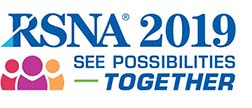

ParticipantsElliot K. Fishman, MD, Owings Mills, MD (Moderator) Institutional Grant support, Siemens AG; Institutional Grant support, General Electric Company; Co-founder, HipGraphics, Inc
Steven P. Rowe, MD, PhD , Baldwin, MD (Presenter) Research funded, Progenics Pharmaceuticals, Inc
Elliot K. Fishman, MD, Owings Mills, MD (Presenter) Institutional Grant support, Siemens AG; Institutional Grant support, General Electric Company; Co-founder, HipGraphics, Inc
Linda C. Chu, MD, Lutherville, MD (Presenter) Nothing to Disclose
efishman@jhmi.edu
lindachu@jhmi.edu
LEARNING OBJECTIVES1) Understand the principles of cinematic rendering and how it differs from classic 3D techniques like volume rendering and maximum intensity projection (MIP) techniques. 2) Understand the potential role of cinematic rendering in applications ranging from oncology to trauma to vascular imaging. 3) Understand the role of cinematic rendering in specific applications in the pancreas, liver, kidneys and cardiovascular imaging. 4) understand how to implement cinematic rendering in your practice. 5) understand the pitfalls of creating images with cinematic rendering and how to help minimize them.
ABSTRACTCinematic Rendering (CR) represents an advance in volume visualization with a high fidelity display of CT data. The technique has evolved with the introduction of faster GPU's at a lower cost and these GPU;s being used for medical imaging. In this refresher course we will discuss the basic principles of Cinematic Rendering and its advantages over classic volume rendering (VR) and maximum intensity projection technique (MIP). Case studies illustrating the advantages and disadvantages of each techniques will be discussed and illustrated. We will also discuss the range of current clinical applications focusing on oncology (pancreas, liver, kidney, small bowel) musculoskeletal trauma, cardiothoracic imaging (including cardiac imaging) and vascular imaging.